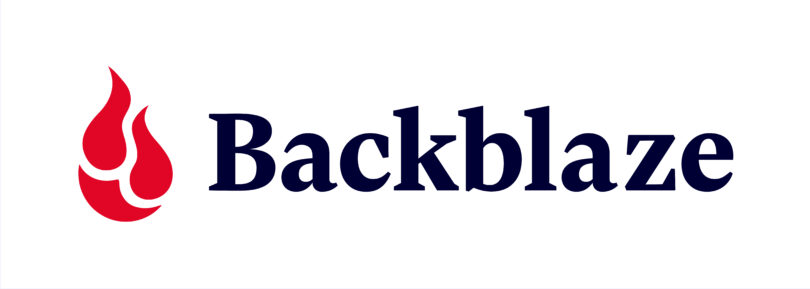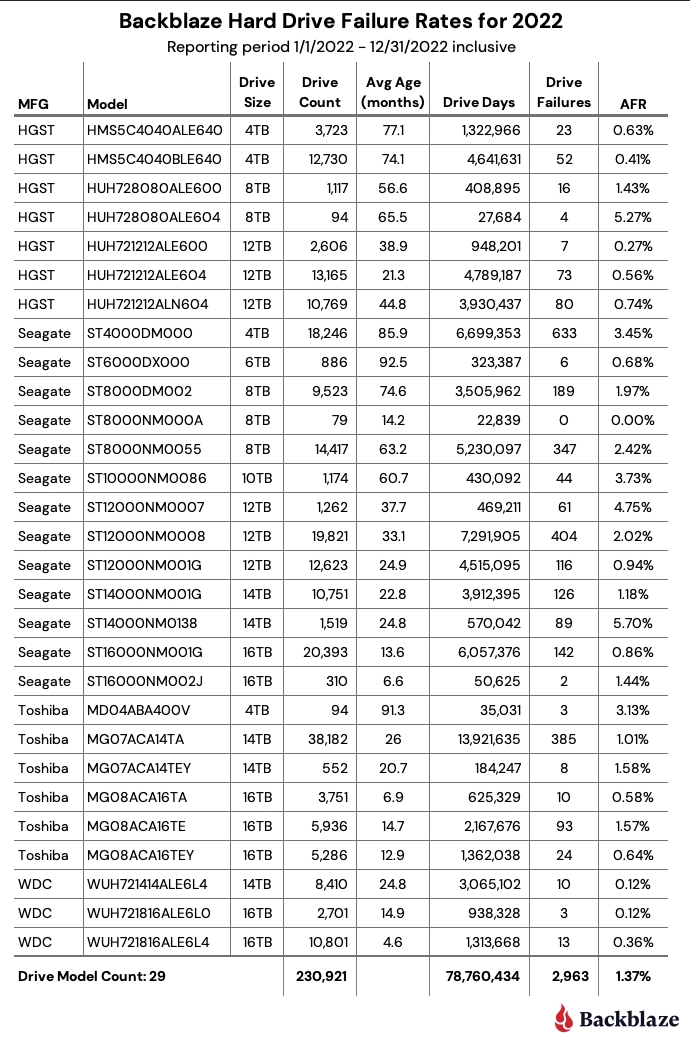Backblaze is is a cloud storage provider that works with some of the top companies in the world. It’s also been one of the go-to guides for long term hard drive reliability reporting, and has released the failure rates of its drives in an annual report. The 2022 failure rate report has arrived and it’s an interesting read.Keep in mind I said reporting and not testing, which I’ll address later in this news post.
Based on the report, we can see four different manufactures are listed, albeit Seagate has more individual models in service than any other.
For Seagate, the 16TB Seagate ST14000NM0138 had the highest failure rate at 5.70%, with the Seagate 12TB ST1200NM0007 taking second place at 4.75%. Both of these failure rates occurred at a relatively young average age of 24.8 and 37.7 months respectively. A remarkably noteworthy Seagate drive is the 6TB ST6000DX000 with a 0.68% failure rate, but at an average age of 92.5 months of heavy server usage.
HGST wasn’t immune to failure with the 8TB HUH728080ALE604 hitting 5.27% failure rate at an average of 65.5 months. However, it should be noted that Blackblaze had only 94 of the drives in service, with 4 of them failing.
A similar situation can be seen with the Toshiba 4TB M04ABA400V which posted a failure rate of 3.13% and average age of 91.3 months. However, only 94 drives were in service of which 3 failed. The 14TB Toshiba MG07ACA14TA has 38,182 drives in service with failure rate of 1.01% at an average age of 26 months.
Finally we have only 3 drives from Western Digital in use at Backblaze, and none had a failure rate above 0.36%. It should be noted though that these are fare younger drives average age being between 4.6 and 24.8 months.
Now let’s talk about a caveat about Blackblaze’s report; this is a report not a test. A proper test will try to eliminate as many variables as possible during the testing procedure. A methodology would be established, and the drives would be tested against that methodology. Backblaze is an end user and not a testing facility. As such, not every drive subjected to the same load, usage, power, or even environment. Some drives are used solely as spares to replace other failed drives, while others may be in servers with higher workloads or heat levels. At the end of day, while the information is interesting and shows us what BackBlaze can probably expect from their environment, this is not a scientific test. It leads to questions that can be tested though. Always remember that correlation is not causation.

Anyway, you can check out the Backblaze report by CLICKING HERE.


